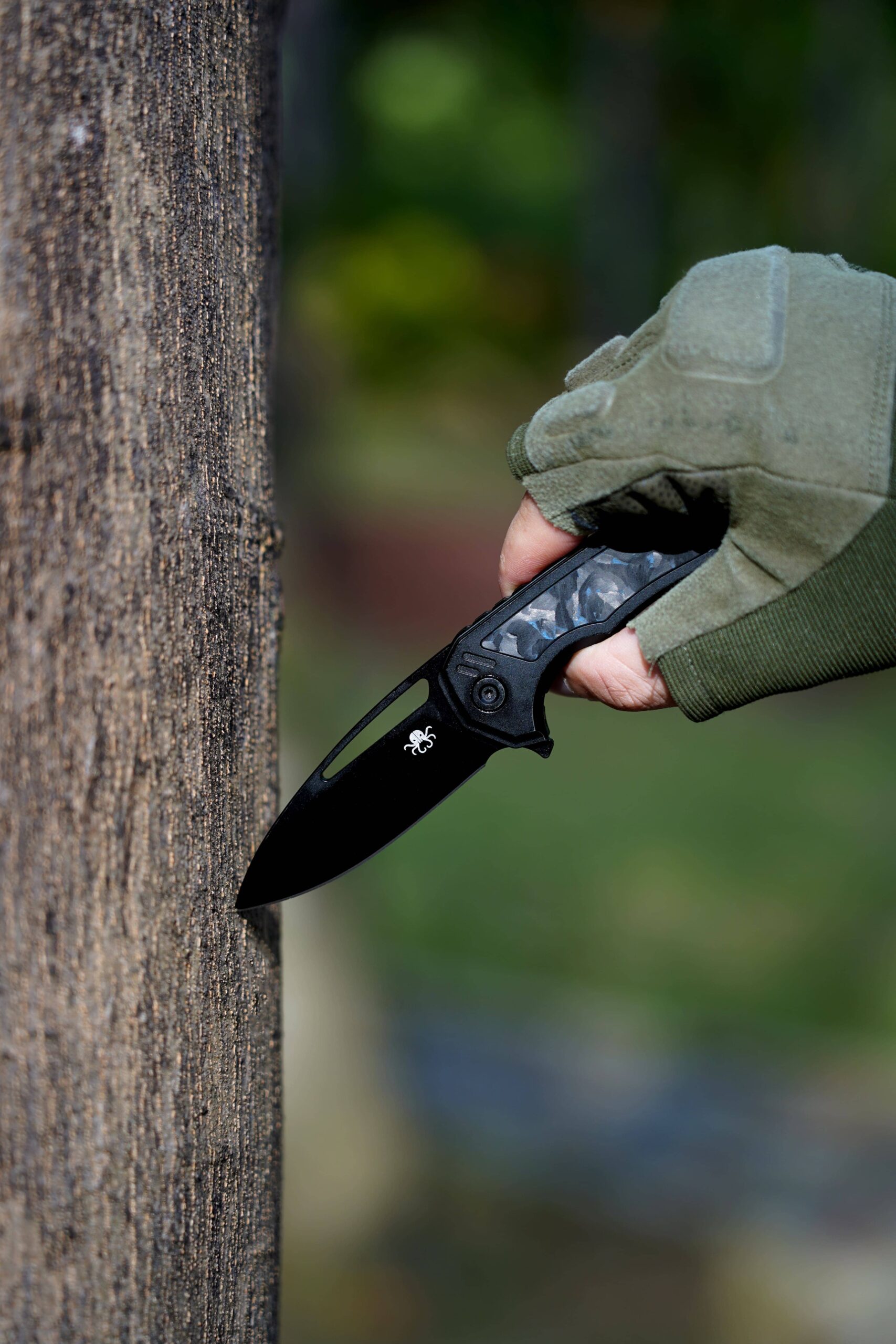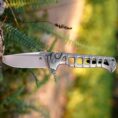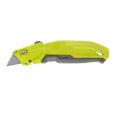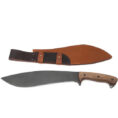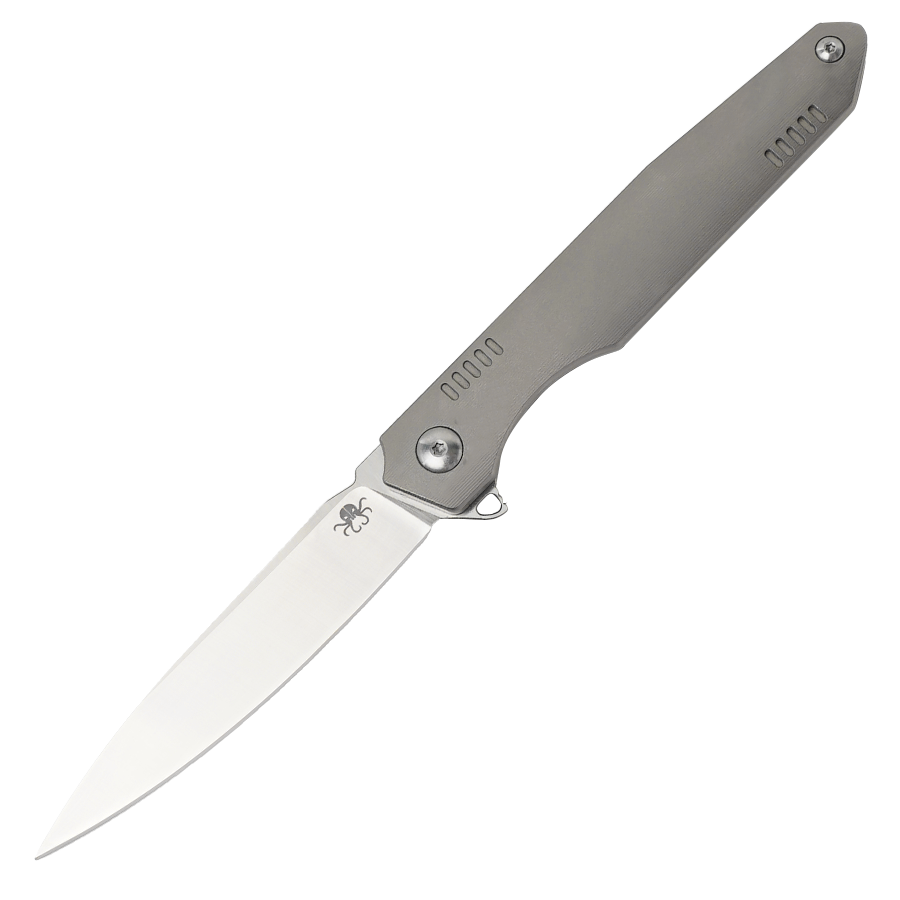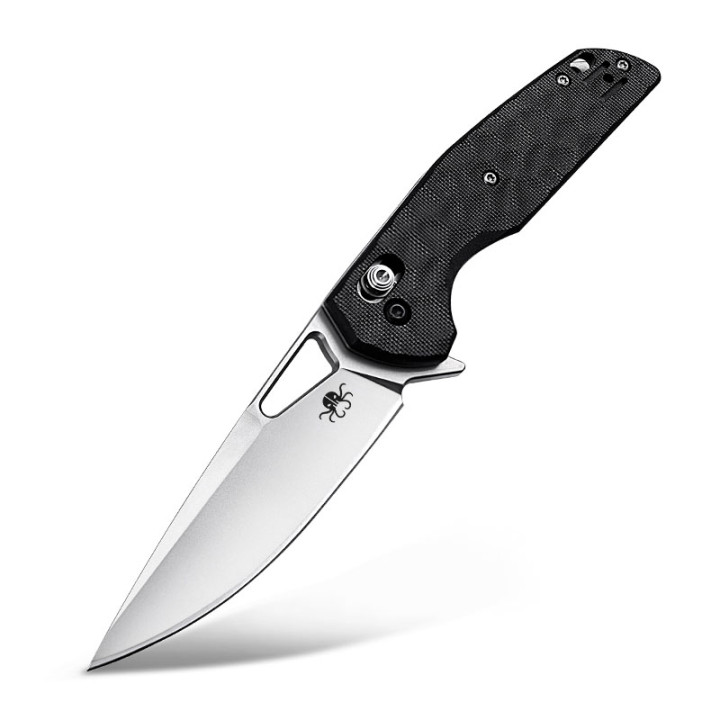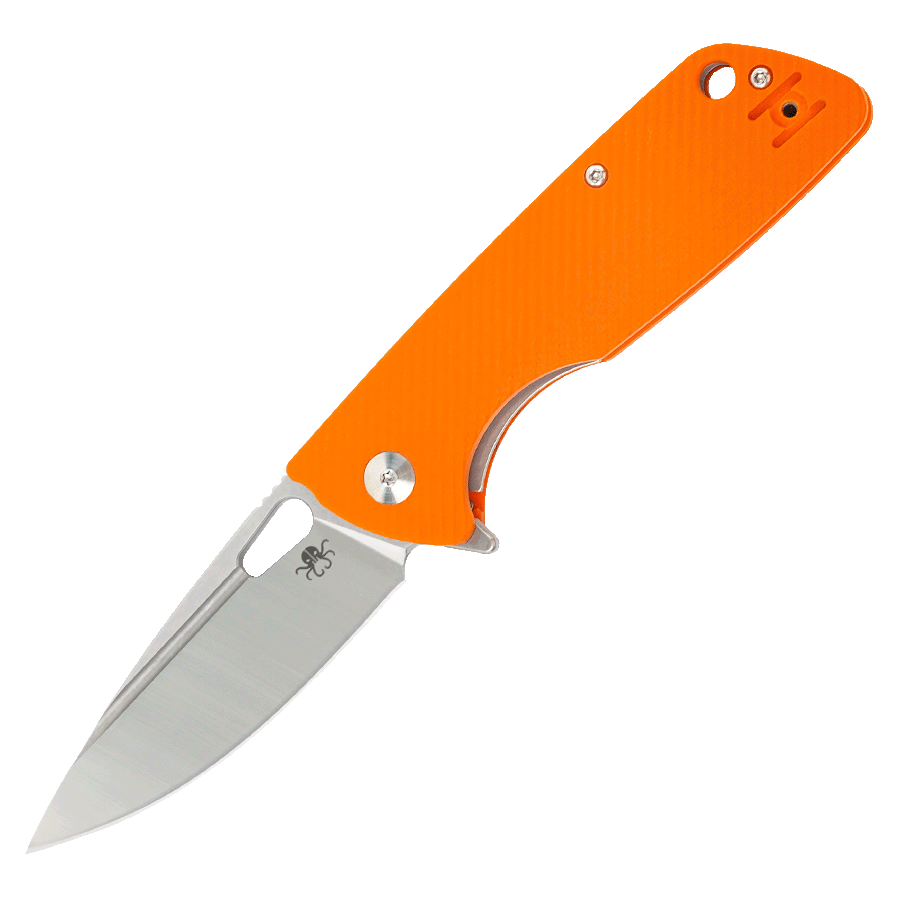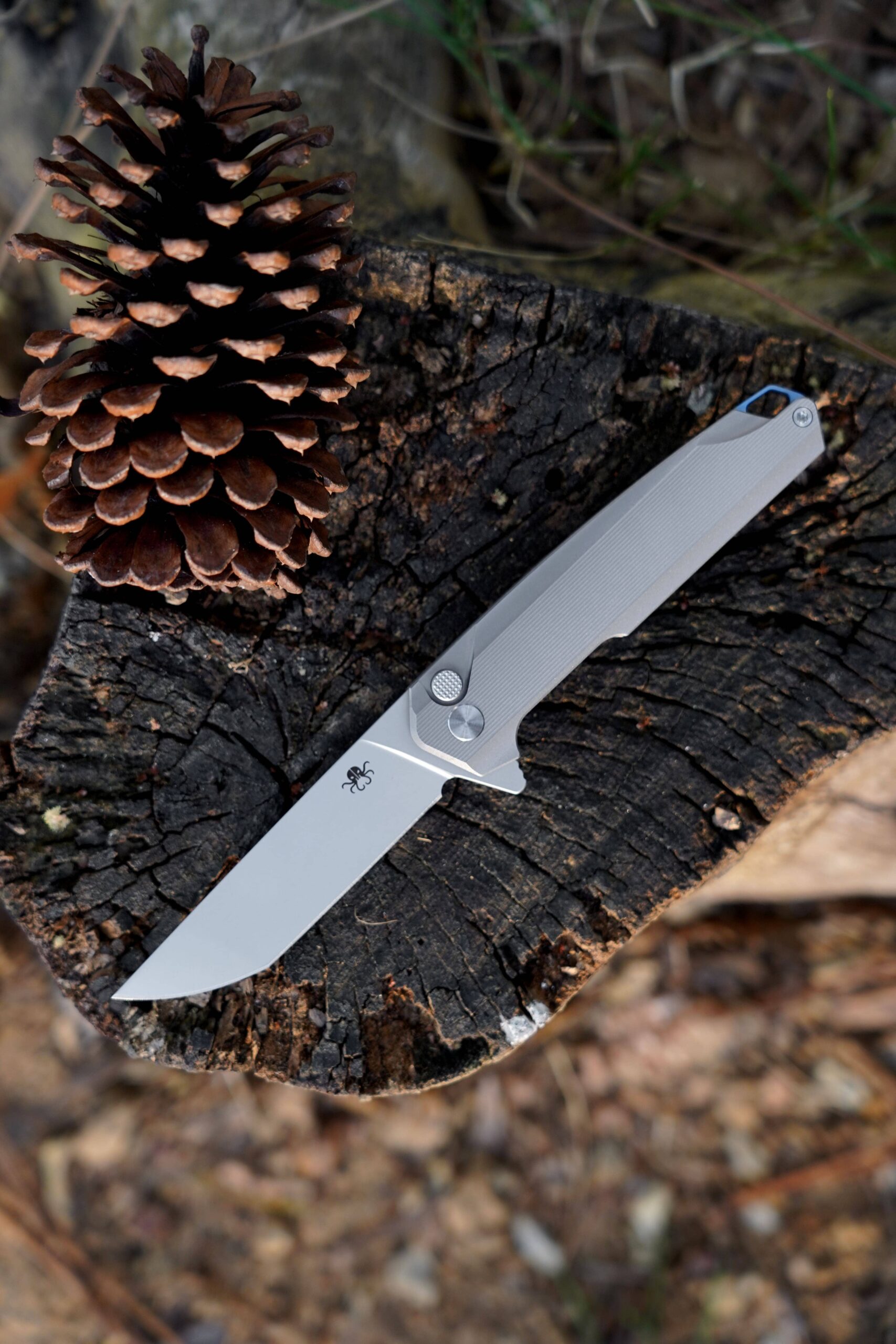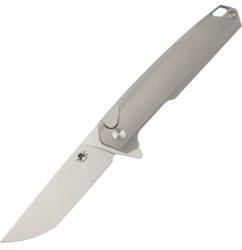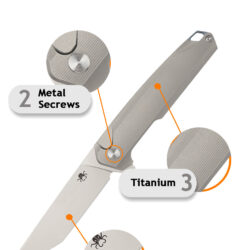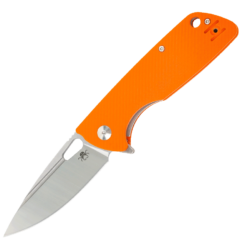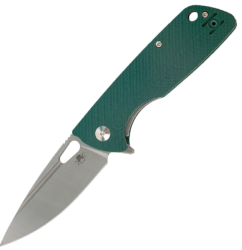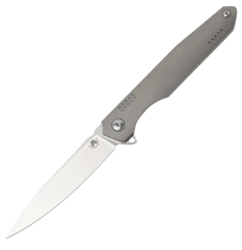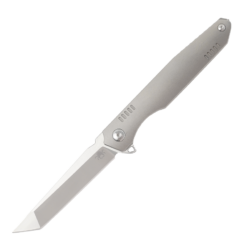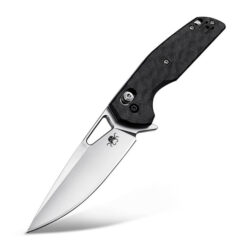ABOUT CARE LIKE A PRO AND BUYER’S GUIDE
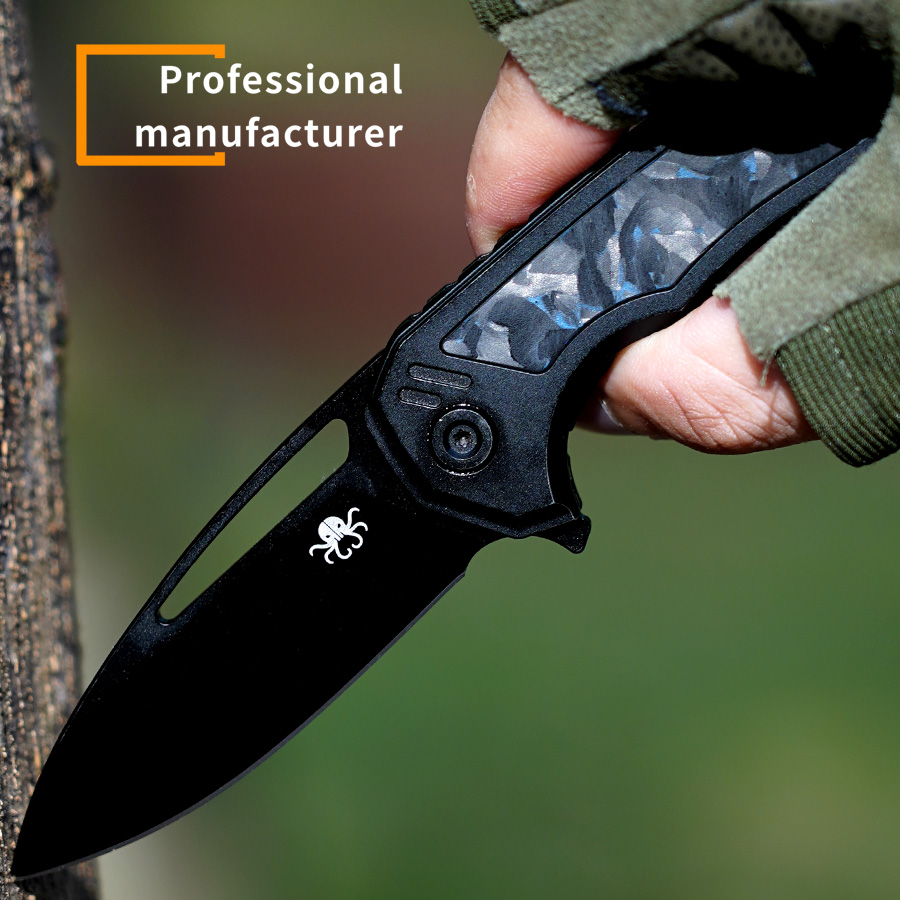
Introduction: The Art of Caring for Your Knife and Selecting the Right Gear
Whether you’re an avid outdoorsman, a professional chef, or a collector of premium knives, taking care of your blades is key to ensuring their longevity and optimal performance. But care goes beyond simple cleaning and sharpening; it’s about choosing the right knife, knowing how to store and maintain it, and understanding the materials and mechanisms that make your tool effective.
This guide is designed for those who want to get the most out of their knives—whether they’re for everyday carry (EDC), cooking, survival, or tactical use. We’ll explore everything from proper knife care to buying advice for choosing the right product based on your needs.
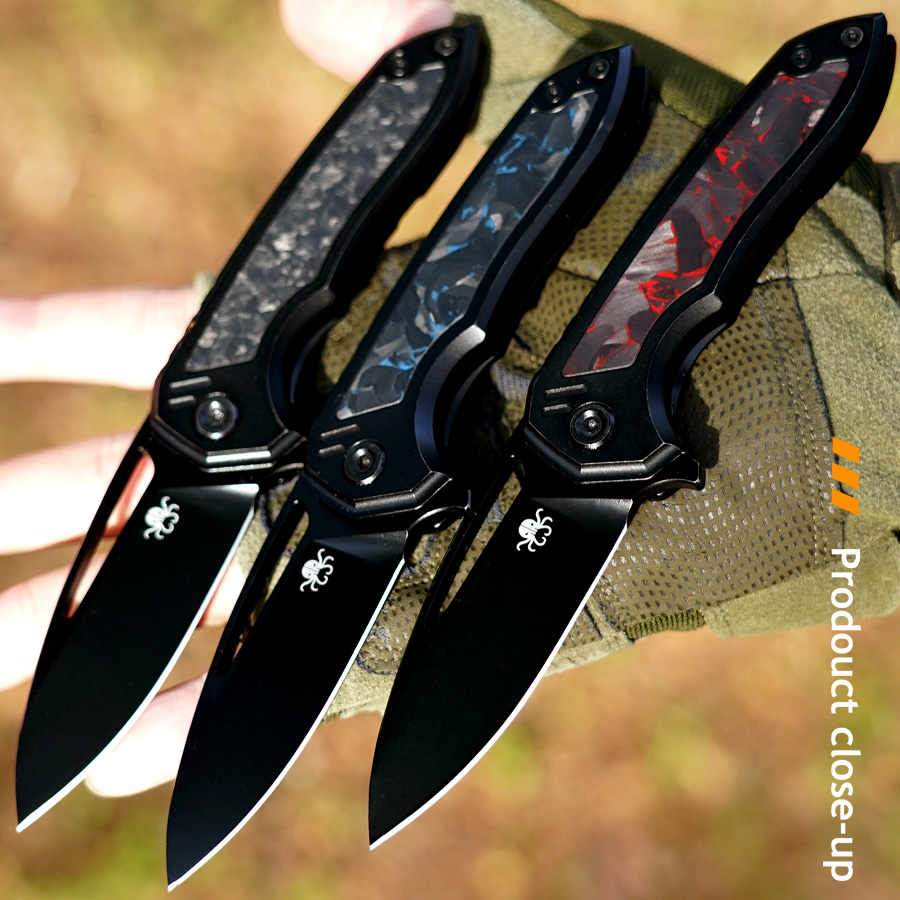
Chapter 1: Understanding Knife Materials and Construction
1.1 The Importance of Steel Type
The steel used in a knife is perhaps its most important component, affecting both performance and maintenance. Understanding different steel types can help you select the right knife and maintain it properly.
Carbon Steel: Known for sharpness and edge retention, carbon steel is also prone to rusting if not cared for properly. A well-maintained carbon steel blade will perform excellently, but it requires more upkeep than stainless steel.
Stainless Steel: Less prone to corrosion, stainless steel knives are a popular choice for everyday use. However, they may not hold an edge as long as carbon steel knives. Popular varieties include VG-10, S30V, and D2.
Damascus Steel: Aesthetic and functional, Damascus steel is made by layering different steels, resulting in a unique pattern. It is tough, holds an edge well, and has a reputation for beauty. It is, however, a more expensive option and can require more maintenance.
High-Carbon Stainless Steel: Combining the benefits of both carbon and stainless steel, high-carbon stainless steel offers better performance without the same rusting risks. CPM-S35VN and Elmax are popular choices in high-end knives.
1.2 Handle Materials and Their Care
The handle is an essential part of the knife’s design, providing comfort, grip, and control. Common handle materials include:
G10: A tough, fiberglass-based laminate that is resistant to moisture and temperature changes. It's easy to clean and maintain, though it can wear down if exposed to abrasive materials.
Micarta: Often used in outdoor knives, Micarta is made from layers of fabric or paper soaked in resin. It provides excellent grip and is durable against harsh environments.
Wood: While aesthetically pleasing, wooden handles require regular maintenance to avoid drying out and cracking. Regular oiling is necessary to preserve their integrity.
Plastic and Polymer: Found in many budget knives, plastic and polymer handles are low-maintenance but may feel less ergonomic over time compared to materials like G10 or Micarta.
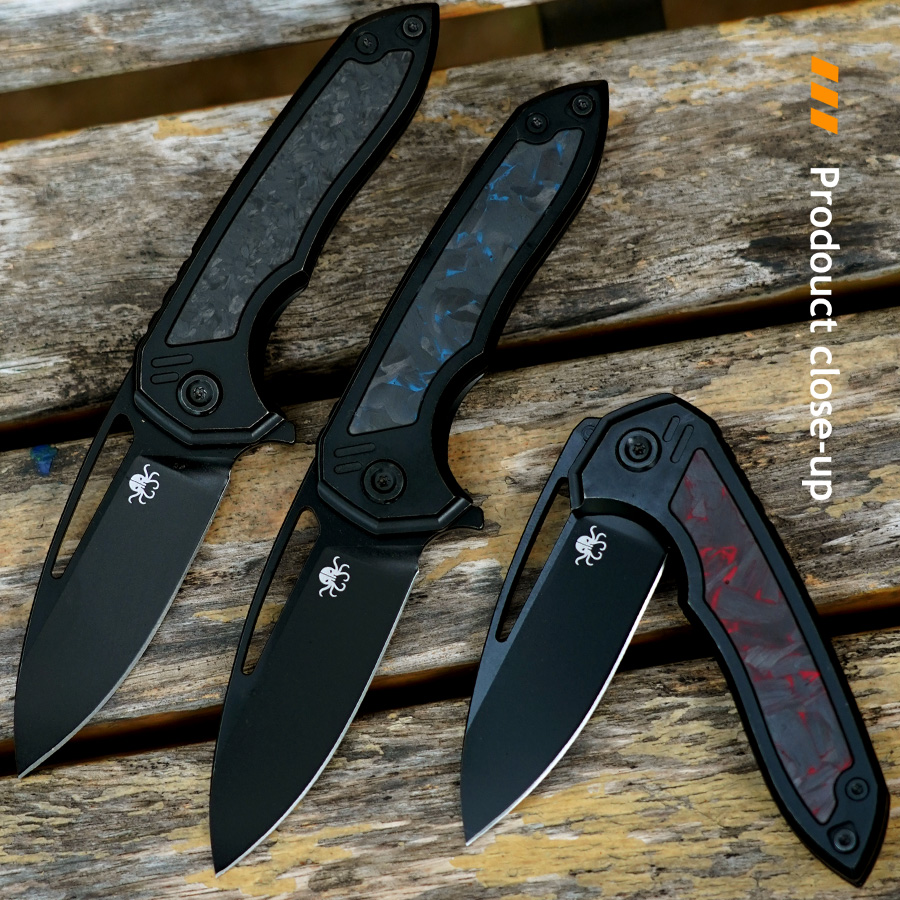
Chapter 2: Knife Maintenance Like a Pro
2.1 Cleaning Your Knife
Proper cleaning ensures that the knife stays in good working condition and that materials like rust or food residue don't build up on the blade.
After Each Use: Always clean your knife after each use to prevent dirt, food, or saltwater from damaging the blade. Use warm, soapy water and a soft cloth to clean the blade. Be careful not to submerge the knife in water, especially if it has a wooden handle.
Drying: Always dry your knife completely after cleaning. For knives made of carbon steel or high-carbon stainless steel, even a small amount of moisture can cause rust, so be diligent.
Deep Cleaning: For knives that have accumulated a lot of grime or debris, use a soft toothbrush or nylon brush to clean hard-to-reach spots, especially around the pivot and locking mechanism for folding knives.
2.2 Sharpening Your Knife
A dull blade is both ineffective and dangerous. Keeping your knife sharp ensures that it performs at its best, especially in critical situations.
- Types of Sharpeners:
- Whetstones: Ideal for precision sharpening. They come in various grits, with coarser stones for repairs and finer stones for finishing.
- Honing Rods: Used for regular maintenance, honing rods help maintain the edge between sharpening.
- Sharpening Systems: Pre-set sharpening angles ensure consistency but can be expensive.
- Sharpening Angles: The correct sharpening angle depends on the type of knife. For example, 22-25 degrees is typical for general-purpose knives, while 15-20 degrees is ideal for kitchen knives that need a sharper edge.
2.3 Oiling Your Knife
Oiling your knife helps to prevent rust, especially if you have a carbon steel blade. Use mineral oil or food-safe oils for knives that come in contact with food.
How to Oil: Apply a thin layer of oil to the blade and handle, rubbing it in with a clean cloth. Be sure to oil the pivot area on folding knives to maintain smooth action.
When to Oil: Oiling is particularly important after cleaning or when storing knives for extended periods.
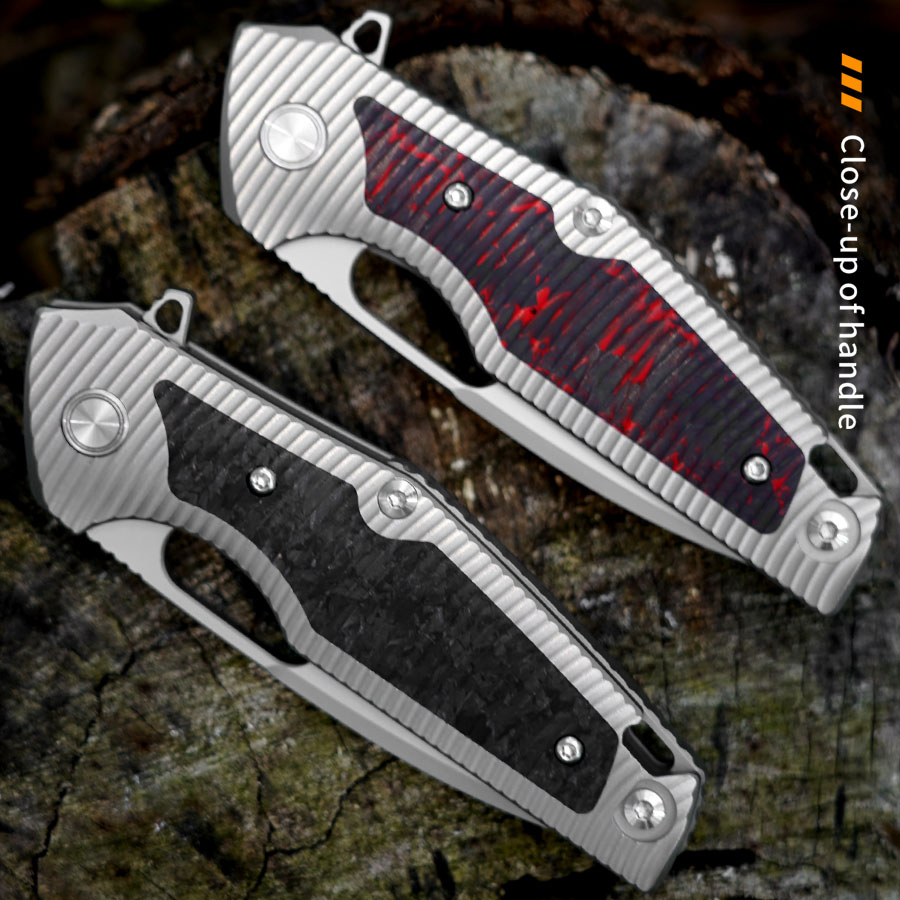
Chapter 3: Knife Storage: Protecting Your Investment
Proper storage is key to maintaining the integrity of your knife over time.
3.1 Storing Your Knife When Not in Use
Dry, Cool Storage: Store your knives in a dry, cool place, away from moisture. Avoid leaving knives exposed to humidity or in places where they might get knocked or scratched.
Knife Blocks or Magnetic Strips: A knife block is an excellent option for storing kitchen knives as it allows for quick access and minimizes contact with other surfaces. Magnetic strips can also be used to store folding or tactical knives.
Leather Sheaths or Custom Cases: For outdoor or tactical knives, a leather sheath or custom carrying case is ideal for safe storage and transport. The sheath prevents the blade from getting damaged and provides a protective layer.
3.2 Long-Term Storage
When storing knives for extended periods, especially during off-season or when traveling:
- Rust Prevention: Use silica gel packs or rust inhibitors in storage cases to absorb moisture.
- Blade Covers: For fixed blades, consider using protective blade covers that shield the edge from damage and dust.

Chapter 4: Common Mistakes in Knife Care
4.1 Over-Sharpening
Sharpening too frequently can remove too much steel, shortening the life of the knife. Only sharpen the blade when it begins to lose its edge, and opt for honing in between.
4.2 Using the Wrong Tools for the Job
Always use the correct knife for the task at hand. For example, using a chef's knife for cutting wood can damage the blade, as can using a hunting knife for delicate kitchen work.
4.3 Storing Knives Improperly
Improper storage leads to knives becoming dull, rusty, or damaged. Never leave knives loose in drawers without proper protection.

Chapter 5: The Ultimate Buyer’s Guide – Selecting the Right Knife for Your Needs
5.1 Consider the Purpose
Everyday Carry (EDC): Look for compact, lightweight folding knives with easy deployment mechanisms (e.g., Benchmade Griptilian).
Tactical/Survival: For tactical or survival situations, choose knives that are durable, easy to maintain, and equipped for a variety of tasks. Look for full-tang knives with high-carbon steel or stainless steel.
Outdoor and Hunting: Fixed blade knives with ergonomic handles and high durability are ideal for outdoor adventures. Fallkniven A1 is a good example of a knife built for outdoor toughness.
Kitchen Knives: Precision is key in the kitchen, so invest in high-quality knives with stainless steel blades, like those from Shun or Wüsthof, known for their sharpness and long-lasting edge retention.
5.2 Blade Shape and Size
Different blade shapes are suited for different tasks. Some common blade shapes include:
- Drop Point: Great for general utility and outdoor tasks.
- Tanto: Ideal for piercing and tough tasks like prying.
- Spear Point: Balanced shape for general use.
- Clip Point: Offers precision and versatility, often found in EDC knives.
5.3 Budget and Brand Selection
When shopping for a knife, consider the following:
Budget: For entry-level knives, consider HWZBBEN or Kershaw. If you’re willing to invest more, look at Spyderco or Benchmade.
Brand Reputation: Popular brands like Spyderco, Benchmade, Buck, and Zero Tolerance are known for their reliability and warranty options.
5.4 Reviews and Testing
Always read reviews before buying and, if possible, test the knife before purchasing. Knife stores often allow you to handle the product, and many online stores offer return policies if the knife doesn’t meet your expectations.
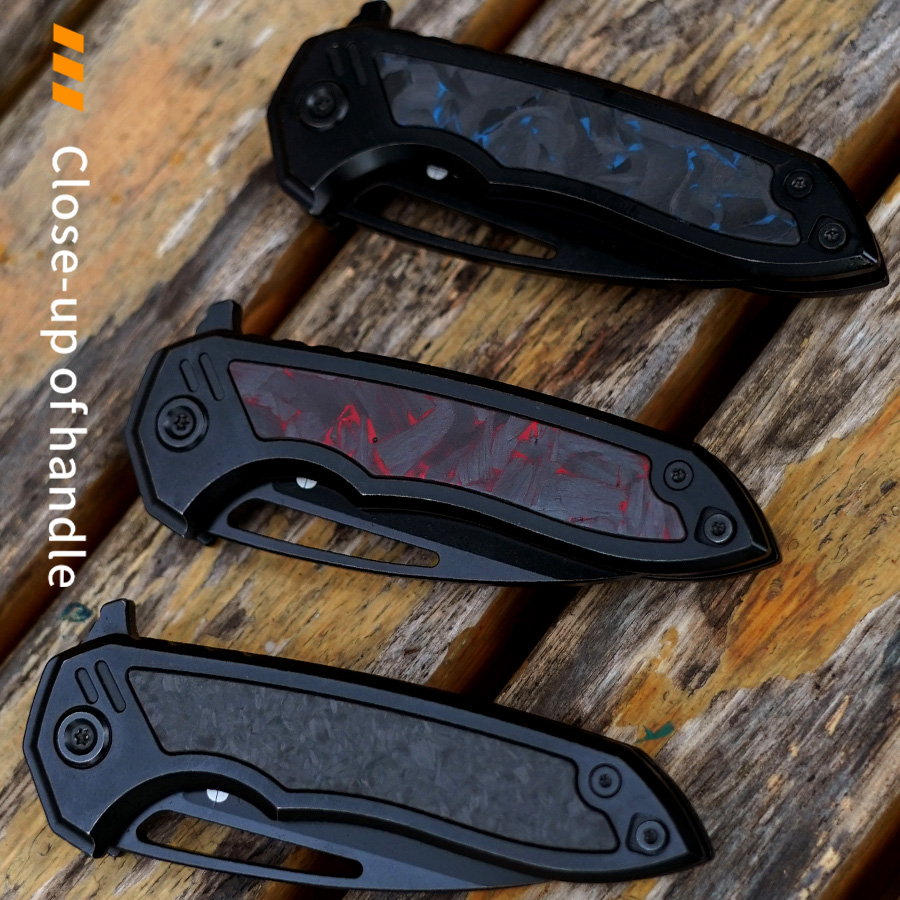
Conclusion: Mastering Knife Care and Making the Right Choice
Taking care of your knife is just as important as selecting the right one. Proper maintenance, sharpening, and storage will extend the lifespan of your blades, ensuring they perform at their best for years to come. By following the tips and guidelines in this article, you can enjoy the perfect blend of performance and longevity in your knives, making them reliable tools for whatever task you undertake.
With this knowledge, you’re now ready to choose the right knife, care for it like a pro, and ensure that it serves you well for many years to come.
